I was catching up with a friend just recently who was a former SERE instructor for an elite foreign fighting unit (from France if that drops any clues). His passion is to travel the world, and where possible, spread the word on the importance of SERE training skills which he believes are crucial in the urban environment, as well as the wild, for people to ensure their survival in any dangerous situation.
This isn’t just some special forces thing, it’s quickly becoming recognized as a skill in preparedness with publicly available survival camps offering SERE training courses being overbooked through people wanting to prepare for their own safety against kidnappings, ransom, and urban terror, just to name a few.
So what is SERE? It stands for Survival, Evasion, Resistance, and Escape and runs on the preparedness methodology of being captured by an enemy by teaching the basics of survival and evasion, as well as resistance to psychological games, interrogation, and how to escape. This is all while you are fatigued, drained and hungry, so the training is not for the faint-of-heart.
The Origins Of The SERE Training Schools
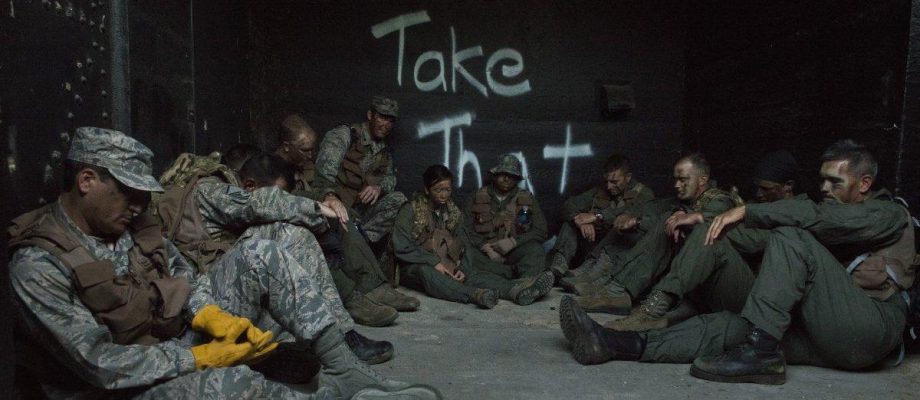
The SERE program in the US Military is responsible for the teaching method and knowledge that we have today on the subject. Essentially, the program teaches military personnel, contractors, and defense employees survival skills and how to evade capture.
While the course is a necessity for most that are in dangerous environments, the basic course is taught to all personnel with a more advanced version taught to professionals considered to be at a higher risk such as special forces and combat pilots. Civilian schools have now adopted similar teaching methods on SERE training, such as Sigma Survival School and Northwest Survival School.
The training’s earliest origins were forged to combat Chinese interrogation tactics on US soldiers captured in the Korean War. Further developments were made as cooperative research and training methods were conducted between the military and the CIA.
A lot of that research and its findings were published in what is now a publicly available NSA archive document titled the KUBARK Counterintelligence Interrogation paper, which is essentially a guide on how to be a good interrogator, as well as a guide on how to spot the mistakes of a poor interrogator. The principle of the SERE school and the methods used are to teach people how to survive and escape, but there is a heavy emphasis on resisting interrogation and keeping a strong mindset in times when you are likely to mentally break under pressure.
While there has been a lot of curiosity as to some of the simulations experienced in SERE training, the teaching ethos is not how to inflict torture, but how to resist it.
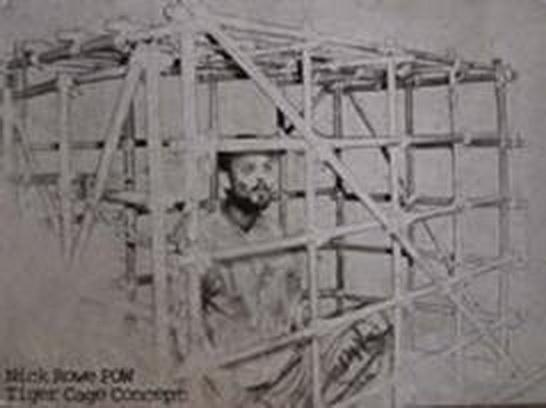
One of the most influential readings, and developers of today’s SERE tactics is LTC Nick Rowe who was one of only 34 prisoners to escape captivity during the Vietnam War. His experience identifies a lot of the basics of why the survival and resistance elements are taught in the training.
His story is nothing less than amazing. During his 62-month-long arduous captivity by Viet Cong militants, after he was separated from fellow Green Berets in South Vietnam, LTC Rowe was held in a 3 x 4 x 6-foot bamboo cage and was repeatedly tortured and interrogated for the duration of that five-year period. After his captors had found out he was a high-value target, the led him to execution, but he was able to overpower his captor, escape and signal a US helicopter.
It is stories like this that show students the importance of SERE skills and its training, not just because of its practical preparedness training in the case of capture, or likelihood of capture, but also as a way to learn more about themselves, challenge themselves mentally and physically and become more professional and better functioning people in stressful situations.
What Does SERE Training Involve?
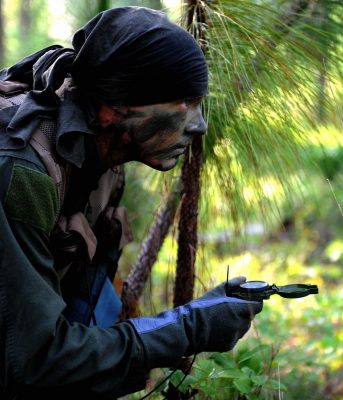
For those of you out there that are interested in this nuts and bolts of the training principles, modern schools break up the SERE methodology into two main fields, which are:
- Survival and Evasion
- Resistance and Escape
Before they start learning any new hacks or secrets on survival, one of the first things most SERE trainees go through is reading articles written by former POWs who were tortured at the hands of their captors during the Korean War and Vietnam War, such as the story mentioned above of LTC Nick Rowe.
For those out there wanting a video on what the conditions look like in the SERE training program, this introduction video is a cold, and adequate, representation of not only the extreme climates students survive and operate in (they also do other climates), but also the stressful, fatiguing conditions they work under.
So let’s take a look at some of the skills (the ones that aren’t classified) that might give you more of an idea as to the rigorous training undertaken by professionals to prepare for the possibility of being caught in enemy terrain. These skills are likely to be the main components of a majority of the civilian courses as well.
SERE SKILL 1: Get Comfortable With The Essentials
One of the first lessons, and experiences, of SERE training, is being outdoors with barely anything but what you can fit in your pockets and a bit of extra water to carry. For a number of trainees who spend long periods of time in the field, their home might only consist of a rucksack with very basic supplies.
During this field application, it allows trainees to experience hunger and a lack of sleep. This causes severe fatigue on the body to simulate a real SERE situation where the mind needs to stay sharp despite external factors.
Not only does this put trainees in a state of operating under fatigued circumstances, but in itself, it teaches people about survival outdoors and in nature. When it comes to surviving in a hostile environment, the more comfortable you are in your surroundings, the more you are able to focus on your task of being situationally aware of your opposition, the dangers of the wild, and ensuring that every movement you make is evasive and unseen by anyone else.
SERE SKILL 2: The Wilderness Is Your Home
An important part of SERE training school is the instruction on survival in the wild. Of course, in any given situation that simulates a warzone capture and evasion, there is going to be some element of being able to use your surroundings to your advantage.
The SERE school uses the assistance of specialist ‘outdoorsmen’ who are proficient at teaching wilderness survival. The lessons in field craft vary from survival in different types of wilderness, and include topics such as:
- How to procure food and water
- How to construct small evasive fires
- How to make evasive shelters for warmth
- How to navigate
One useful resource for field survival is this US Army Survival Training Video which identifies a number of very important skills when surviving in a potentially enemy controlled area.
SERE SKILL 3: The Survival Gear Essentials (SERE Kit)
While the course is primarily taught with the idea of using limited equipment, it still recommends a sense of survival preparedness by carrying a small kit wherever you go.
Soldiers are issues many of the items that are included in the kit, and there are a number of older versions of SERE Kits still floating around online such as this old USMC SERE Kit (eBay PN promotional link).
That SERE Kit consists of:
- Tinder cubes
- Water purification tablets
- Camo bandage and headscarf
- Signal mirror
- Whistle
- IR patches
- Small finger lights (red light and IR light that velcro to your fingers)
- A handcuff key
- A tiny leatherman (P4 Squirt)
- Waterproof match case with a mirror on the inside, button compass, flint striker, fire starter and matches
It should be noted that most personnel carry their light necessities as well. So things such as cooking equipment, water bottles, a KaBar knife are already assumed to be carried by the individual.
There is a civilian adaptation that comes as a set kit with these items from survival knife manufacturer ESEE Survival. Their ESEE Pocket Survival kit is trusted by many as a good understanding of the advanced equipment that would be needed in a SERE-type situation.
In the medical module of the air force SERE kits, there is a large focus on items you would need in the wilderness such as:
- Suncream
- Combat gauze/Quikclot
- Insect repellent
- Bandages
- Tourniquet
- Anti-septic towelettes
- Cyalume stick (chemlight)
You can find a review on the contents of the Air Force SERE Kit below by BlackScout Survival, who also points out some flaws with the kit.
SERE SKILL 4: Escape And Evasion Tactics From Dogs
Man’s best friend can also turn out to be your worst friend, especially when they are trained in the skill of tracking over long distances. This is another skill taught in SERE training methodologies as part of the program for evasion tactics.
In the field phase, while students are using all of the survival skills of food, water, navigation, and warmth while tracking their way across a relentless countryside, timing is a factor as it is not just a game of survival, but the game of evasion as well.
As mentioned in SOFREP, defeating the skill of a tracking dog is not easy, and contrary to the Hollywood knowledge most of us have about tracker dogs, they do not bark while tracking you through the night.
Instead, canines on the hunt walk, run and sniff, not bark. The only time they bark is when they see you. This is when it’s too late, as your position is now revealed to your likely captors. In a post-SERE training review from SOFREP, the writer awoke from his camouflaged and well-hidden sleeping spot to the tongue of a basset hound licking his face. Game over.
So how can you evade tracker dogs? It’s hard, but there are some tricks you can do to lose the scent of a tracker dog. They are:
- Get as much space between you and the dog as possible (obviously)
- Travel through harsh terrain in a bid to tire out the dog and its handler
- Do not cross into water, the water that drips off you will have a stronger scent
- Get a small bucket of water that you have washed your skin with, create a small drip hole in the bottom and attach it to a moving vehicle or a small raft made with sticks to throw the scent off
- Coating the body in petroleum jelly so as to not leave any skin cells for the dog to trace
- If you can do it, safely traversing rapids across a river will throw off any followers as well as their dogs. Some survival schools recommend using a zip line for this as well.
- Make several sharp and large direction changes causing the handler to doubt his dog and call off the search
- Move with the wind, as your scent will otherwise be carried downwind to the tracker dog
SERE SKILL 5: The Important Of Being Evasive
Whatever situation you are thrown in, whether it be in a military or civilian environment, the most important thing you can do is to evade capture. Aside from reaching safety, being aware that you could be caught at any time is the primary concern. For military trainees, capture is part of the course as they are plunged into the element of resistance, which unlike survival techniques or evasion skills, can’t be taught in a classroom.

In a military setting, once you are caught by the enemy it will result in either detention, possible death, or if they are not abiding by any UN treaties, torture for information on the whereabouts of others, your mission and any other relevant information you may have. In a civilian setting, capture could amount to ransom, kidnapping, interrogation, or terrorist acts.
For LTC Rowe, who spent five years in a confined bamboo cage in Vietnam, evasion would have relieved him of that huge ordeal.
Evasion is a mental game and it isn’t just a skill for the wilderness, it is also for the urban environment which is why it has such a presence in the civilian courses. It relies a lot on what we refer to as situational awareness and the art of being highly attuned to your surroundings with a cautious sense.
Some SERE training graduates recall their evasion stage as a very big game of hide and seek in the wilderness. For ex-US Navy Special Forces officer Rick Campos, the enemy grew closer and closer each day. And with the open space of the wilderness, hiding was not easy. In their team, they would send the fastest person to cross large open spaces, and he would signal back that the coast was clear and the members would take turns in sprinting the open space one after the other.
Some methods of losing trackers (humans this time) and evading capture are:
- Finding herds of local animals (cattle for instance) that will walk over your tracks
- Purposefully alter your walking or running gait
- Leave decoy tracks
Some also believe that a good method to avoid being found (especially for someone good at survival) is to create false tracks and cut back on your original path so as to get behind the enemy. This is a common technique for urban environments to understand who might be following you, and instead, follow them to gain an understanding about your enemy, see their patrol path or routine, and plan your escape and evasion with a better picture of the enemy.
The evasion element has a direct benefit to specialists and surveillance trainees in the urban environment as well, as while the spaces are not empty and there are likely more people around, the mental game of evasion instills a new mindset of prioritized thinking.
SERE SKILL 5: Resistance Is About Mental Toughness
The resistance element of SERE is the last part of the training for students before their escape and is a skill I cannot write too much about here. Having been through military training myself, I can attest to certain weapon management, equipment do’s and don’ts, and other interesting boy scout information that you can try out yourself, given the right circumstances. But writing about the mental development and the mental game anyone in the defense services, or law enforcement, goes through is a whole other ball game.
For SERE schools, simply put, the resistance element tests the mental strength of candidates to apply themselves to these six articles of the Code Of Conduct:
- I am an American fighting in the forces which guard my country and our way of life. I am prepared to give my life in their defense.
- I will never surrender of my own free will. If in command, I will never surrender the members of my command while they still have the means to resist.
- If I am captured I will continue to resist by all means available. I will make every effort to escape and aid others to escape. I will accept neither parole nor special favors from the enemy.
- If I become a prisoner of war, I will keep faith with my fellow prisoners. I will give no information nor take part in any action which might be harmful to my comrades. If I am senior, I will take command. If not I will obey the lawful orders of those appointed over me and will back them up in every way.
- When questioned, should I become a prisoner of war, I am required to give name, rank, service number, and date of birth. I will evade answering further questions to the utmost of my ability. I will make no oral or written statements disloyal to my country and its allies or harmful to their cause.
- I will never forget that I am an American, fighting for freedom, responsible for my actions, and dedicated to the principles which made my country free. I will trust in my God and in the United States of America.
Sound easy? It’s not. First, the conditions you are in is restricted through starvation, lack of sleep, thirst and mental fatigue after having been through a period of survival in brutal conditions, eating very little food and nutrients, having very little sleep and being mentally and physically on the run evading your would-be captors. Now you’re promised food, warmth and a nice rest in trade for just a little bit of information.
The arduous process and the attraction of breaking would be further exacerbated by the sounds of terrible songs playing on loudspeaker 24 hours a day. If a song wasn’t playing, it was the sound of a little girl pleading for her daddy to come home over the speaker. This would continue for three days, which doesn’t seem like long, but when there’s no element of time, it can seem like an eternity.
That was ex-Navy Seal Brandon Webb’s account of what SERE training looked like, from his book The Making of a Navy SEAL. For Navy SEAL Ward Carrol, Rudyard Kipling’s poem “Boots,” was on played over the speakers, over, and over, and over.
What do they want to test here? Simple, it’s to see if you can finish your training with honor. That’s it.
How do you think you’d fair in a situation where you not only had to survive in the wild, but also escape or evade capture from people hunting you down?
Leave a comment below.

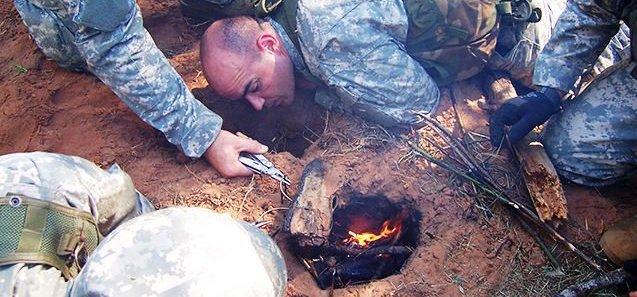
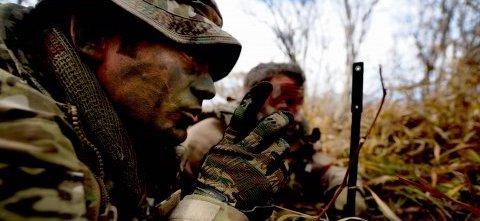

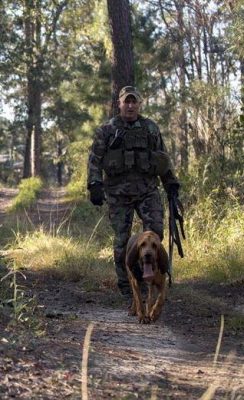
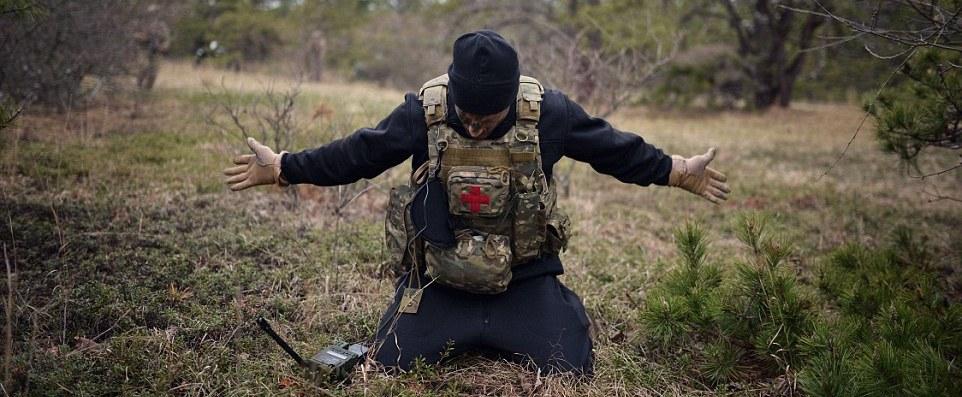
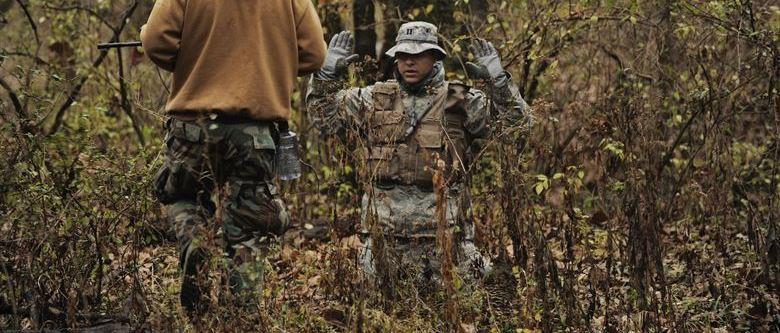




I admire SERE grads and warriors. I am a civilian, but survived domestic abuse and torture. I evaded further abuses once I figured out what was happening (it took 13 months though for my eyes to open). I’ll always be situationally aware now. I resisted taking alcohol and arguing, when I realized that was a mental and emotional snare, and I escaped by pretense, determination, and God’s intervention. Everyone, male and female, should get SERE training, and learn self-control in particular. God bless America.